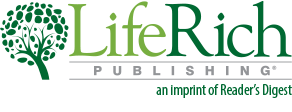What About Tea?
American Indians made Chaparral tea by grinding the leaves of the creosote bush. This desert shrub grows in Mexico and the southwestern United States and has a distinctive tar-like fragrance. Native Americans made tea from the leaves of this plant to treat chicken pox, colds, diarrhea, menstrual cramps, pain, snake bites, skin disorders and rheumatism. Over the years, it has also been prescribed for an even longer list of ailments ranging from acne to dandruff, diabetes, ulcers, UTI and even cancer.
Today, Chaparral is available in capsule and tablet as well as tincture form. Chaparral contains a powerful antioxidant called NDGA (nordihydroguaiaretic acid) that has been used as a food preservative and may account for some of its medical properties. It is still used as a traditional medicine, despite known liver toxicity. Warning: it should not be taken internally (either as a tea or supplement). However, there is a place for its topical use. Mexican herbalists have long valued it for healing eczema and other kinds of skin irritation and inflammation. It often works better than many pharmaceutical products. Chaparral is sold as a lotion or salve and is usually found in health food stores.
Today many tea drinkers believe that their cup of tea is healthy and is loaded with antioxidants. They believe they are reducing their chances for cancer, which may be true, but many teas are also toxic, as they can be loaded with pesticides and artificial flavors. Investigate before indulging!
Harmful herbal teas such as Lobelia are promoted for smoking addiction. Sassafras, Penny Royal and Comfrey alkaloids may also produce liver damage.
There are, however, teas that have the potential to make you healthier. People the world over have been brewing tea for both flavor and healing purposes.
● Oolong tea activates enzymes that reduce triglycerides, a type of fat found in the blood and that can be harmful at high levels.
● Studies show that women who drink oolong tea burned a slightly larger amount of fat than those who drank only water. Oolong tea contains niacin, which helps detoxify the body, as well as antioxidants that can prevent tooth decay.
● Green tea is an excellent source of catechins, an antioxidant that can decrease the risk of cardiovascular disease by 10%.
● Black tea is one of the most highly caffeinated varieties of tea, with about 40 milligrams of caffeine per cup. Black tea also contains thearubigins and theaflavins, and both these antioxidants help lower cholesterol levels. Another plus: drinking three or more cups of black tea a day can cut the risk of stroke by 21%.
● Lemon ginger tea has an active ingredient called zingiber with the lemon. It contains the immune-boosting compounds pectin and limonene, which can make this an effective weapon against bacterial infections. One study showed that drinking lemon ginger tea can kill the bacteria salmonella.
● Chamomile tea is an ancient natural remedy with many health benefits. Research shows that its antioxidants may help stunt the growth of cancer cells and also prevent diabetes side effects such as loss of vision, nerve damage and kidney damage.
● According to the American Cancer Society, white tea is the ultimate “healthy” tea that can reduce further risks for breast cancer survivors.



